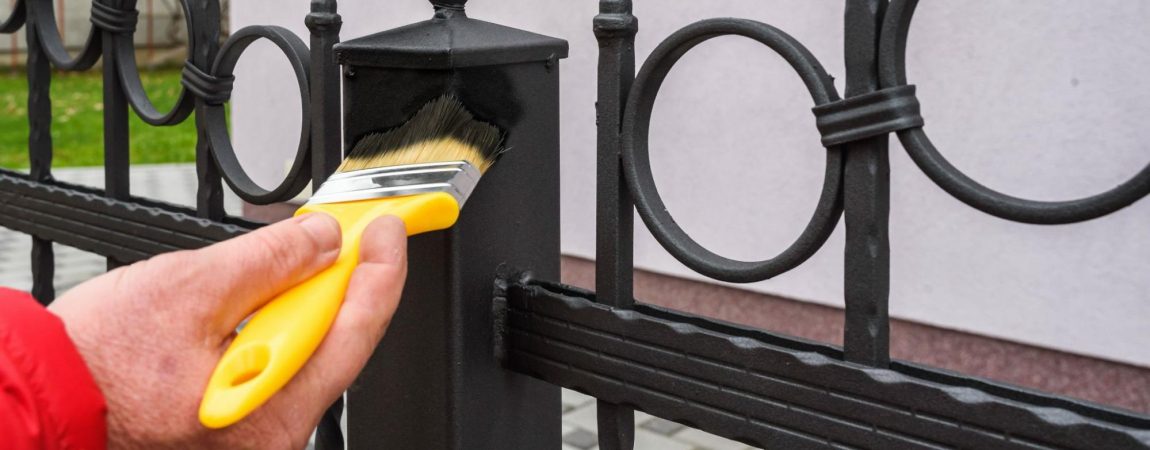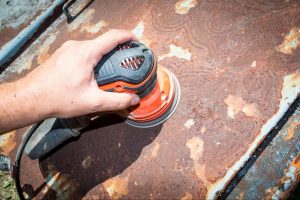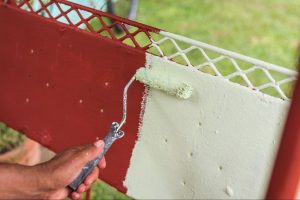
Tips To Consider Before Painting Metal
Posted on October 18, 2022
Painting metal slightly differs from painting other surfaces such as wood and plaster. This is why you want to ensure you follow the right steps and use the right tools for the best outcome. Whether you consider painting outdoor furniture, decor, or indoor finishes, you should do your due diligence before painting to keep your metal surface looking great. Here are essential steps before you get started with your painting.
Put Down the Paint and Start Here
Preparation is a key element to properly painting metal. Don’t just grab a brush, some paint, and get started quite yet. There are several considerations to prepare for your project and set yourself up for success.
Condition of the Metal
Metal is prone to rust. Before you do anything, ensure the metal you want to paint is rust-free and clean. Painting the metal on a rusty surface will make your project ineffective as it will simply bond to the rust rather than the metal surface itself. If there is significant rust on the metal, be sure to properly remove it and repair any surfaces as needed.
Use a wire brush, sandpaper, or scuffing pad to scrub off the rust and flaking paint to remove the elements from the metal. If the rust has penetrated deeply into the metal or caused significant damage, it can be a challenge to remove with a simple scrub. If this is the case, soak the metal in a rust remover and follow the outlined steps in the manufacturer’s manual.
Some old metals will also require power washing, while others would need repair if they have excessive rust damage. If the rust is deeper, you will need to replace the metal. If the metal is new, it may require sanding to provide a more adhesive surface for the paint.

How Do You Prepare Metal for Painting? Do You Need to Prime?
Once you remove rust and clean the metal, you should prime it. Begin with a zinc chromate primer followed by a self-etching primer. Ensure the primer is designated for metal to ensure you get the best outcome. To avoid mistakes, read the labels carefully and apply the right primer on the intended surface. The primer should also be suitable for the paint you plan to use.
Where and How Will the Metal Be Used?
The location of the metal – indoor or outdoor – plays a crucial role in determining the type of paint to use. Outdoor furniture, for example, is regularly exposed to harsh weather conditions and is typically used by many people. Here are some other things to consider:
- Is the area susceptible to moisture?
- Will the metal be regularly exposed to high-heat areas, like a fireplace?
- Will it be prone to dents and dings from use?
- Do the surfaces need extra shielding against rust?
The above questions will help you make informed decisions about the type of paint to use and how to prepare the piece before painting. Knowing this information will help you avoid making mistakes that could end up wasting your time and resources.
What Type of Paint Do You Use for Metal
Once you determine where the metal piece will be placed and how it will be used, it is time to choose the right paint. Using specifically designed paint for metals is essential, but it may not be an easy decision due to the variety of paints available on the market. However, there are two main paint types that can be used on metal: oil-based paint or water-based acrylic.
- Oil-based paint: These are known to be the most durable, making them an excellent choice for outdoor metal surfaces, like fences, patio furniture, and even outdoor grills – make sure it’s a heat-resistant paint for this surface, though! This is also a great choice for surfaces that will see a lot of use indoors, like cabinets and window frames. Oil-based paints are usually a bit more expensive, but they cure in a way that repels water and stains and resists scuffs and dents. It can be applied directly to metal and, since it doesn’t contain water, will not cause the metal to rust. Over time, however, it may be susceptible to cracking, chipping, or fading.
- Water-based acrylic: If you are painting a light to moderately used metal surface that will remain indoors, you can choose a water-based acrylic. This is ideal for items like wall sconces or bed frames, and the paint emits fewer fumes and dries faster than oil-based paint. While it is resistant to cracking, chipping, and fading, it is more vulnerable to dents, stains, and scuffs. Also, because it has water in it, these acrylics could actually cause the metal to rust, so you will need to apply an oil-based primer beforehand.
To apply your paint, simply work with a brush or roller as you would any other surface. If you are working on a project that has an irregular shape or many hard-to-cover, intricate designs, you may opt for spray paint for an easier application process.

How to Properly Seal Your Painted Metal
Once you paint your metal, the best way to ensure its durability is to seal it properly. Sealing may be optional in some cases, but it plays an essential role in providing a layer of protection to the metal. It is imperative to let the paint dry and cure before sealing, otherwise, your paint project will be more susceptible to early damage. This extra layer also enhances the look of the metal surface and gives it a strong shine.
Contact a Painting Pro for the Best, Long-Lasting Results
There are several things to consider before painting any piece of metal. It’d be best to seek help from a professional for the best outcome. At CertaPro Painters® of San Francisco, we have a team of experienced painters focused on providing our customers with quality, extraordinary, and customized painting experiences. Contact us today for a free estimate of your painting project.





